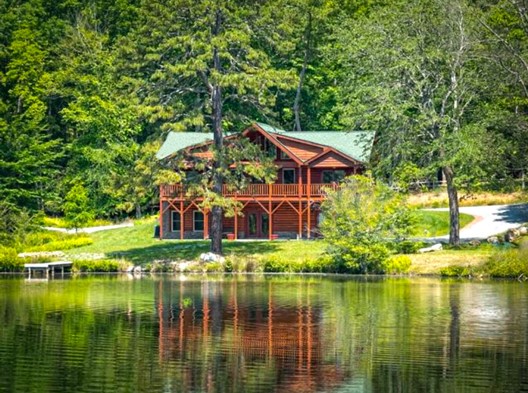
For so many, there is nothing more beautiful than the amazing, authentic look the logs of your home offer. If built properly, a log cabin will keep you warm in the coldest of winters and cool in summer. However, if built or maintained poorly, it’s likely that you will have insulation issues.
One question people ask is “Are log cabins insulated?”. The average log cabin is not built with insulated walls, the walls are built from solid logs. You may be wondering how a home without insulation can keep your warm during the cold seasons. Continue reading to learn more.
Log cabins walls are built from solid logs and don’t have any insulation built it. You can find cabins which are built from wood textured cladding which may have insulation however authentic log cabins won’t have added insulation.
R-Value of insulation
An insulator is a substance that does not readily allow the passage of heat or sound. This means that an insulator should prevent heat from escaping your cabin when its cold outside, it should also prevent heat from entering your cabin when its hot outside. Solid logs, to an extent, performance this purpose.
As far as a modern insulator, logs do not offer insulation in the range as a fiberglass material for example. Using the ‘R-Value’ which is a measurement of a materials ability to prevent heat transfer. Typical fiberglass insulation has an R-value of around 14. Whereas a 6inch thick pine log will have an R-value of around 8.4. This shows that in terms of R-Value, though a log may provide a decent amount of insulation, a typical modern insulation is better.
Despite this, R-value is only one factor which is relevant in the insulation of log cabins.
The Heat Battery Effect
The logs from your cabin will absorb any heat which it encounters. This means that during the day when the sun is out, the heat provided will be stored in the logs. Additionally, this means that the logs also store any heat provided by heat sources inside your cabin such as your fireplace, furnace, etc… During the night when it begins to get cold, the heat which the logs have been holding onto will gradually be discharged into the cabin.
We should keep in mind that though this does have some influence on how warm your home is, in terms of R-value it only adds around 0.1 per inch of thickness. This would mean that a 6 inch thick log would have an R-value of around 9.
Minimizing Air Leakage
Log homes are susceptible to developing air leaks. Air-dried logs are still about 15%–20% water when the house is assembled or constructed. As the logs dry over the next few years, the logs shrink. The contraction and expansion of the logs open gaps between the logs, creating air leaks, which cause drafts and increase high heating and cooling requirements.
To minimize air leakage, logs should be seasoned (dried in a protected space) for at least six months before construction begins. These are the best woods to use to avoid this problem, in order of effectiveness.
Because most manufacturers and experienced builders know of these shrinkages and resulting air leakage problems, many will kiln dry the logs prior to finish shaping and installation. Some also recommend using plastic gaskets and caulking compounds to seal gaps. These seals require regular inspection and maintenance resealing as necessary. Also, pay close attention to leaks around doors and windows.
Controlling Moisture
Tree cells are able to absorb water very readily after the wood has dried. For this reason, a log home is very hydroscopic — it can absorb water quickly, which can promote wood rot and insect infestation and damage the insulation properties of your logs. It is very important to take steps to make sure water drainage is flowing away from the home, that gutters and downspouts are kept free of debris and functioning well. Sealing the logs and ongoing maintenance is also key to moisture prevention.
888-Log-Guys can come and inspect the R factor of your home and check for air leaks and water damage. Call to be added to our annual maintenance list or schedule an appointment today! You can also complete a request for a hassle-free estimate here!








